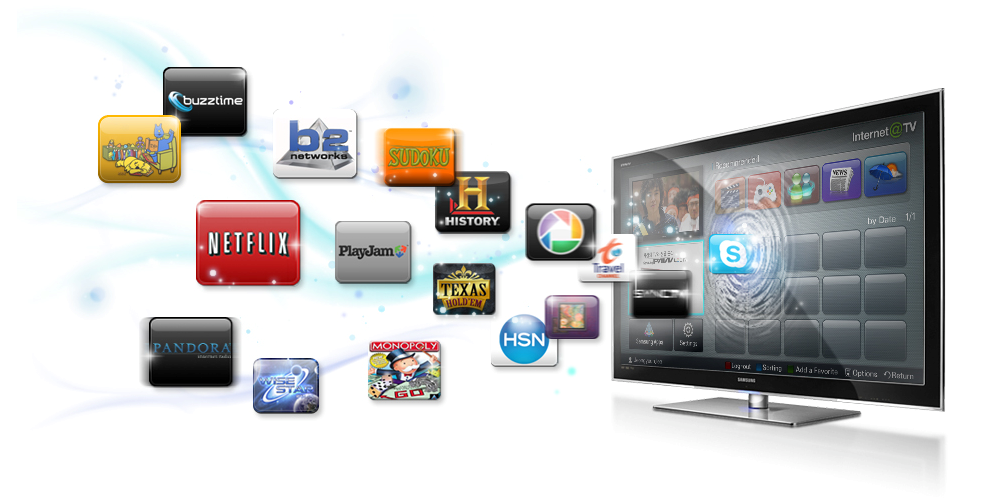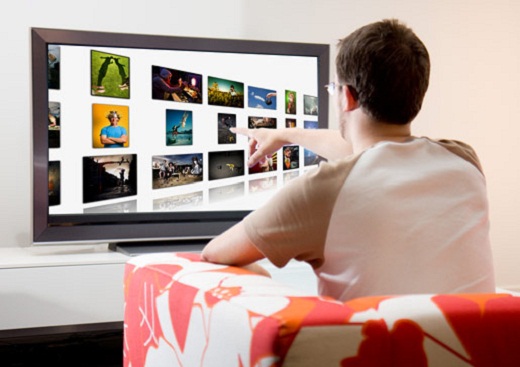The Financial Times recently released a special report titled “Digital and Social Media Marketing.” The folks at Social Commerce summarized the lengthy release and drew out several bullet points I find especially interesting regarding the state of television:
- The average American still spends about five hours a day glued to TV; the smart money in digital is being invested in making TV advertising better
- TV is not dead, it is just evolving into a two screen experience, the TV display and a tablet or smartphone. “Lean-back” TV experiences, passively consumed from the comfort of the couch, are giving way to “lean-in” TV experiences, where viewers multitask viewing and interacting on smartphones and tablets
- A survey by Time Warner’s Medialab found that 65 per cent habitually multitask with a digital device while watching TV. Much of this activity is in social media discussions of TV shows (tripled in the last 12 months), stimulated by TV networks to sell TV advertising space by showing their content is more engaging
This report only confirms what I had previously suspected: multitasking is now widespread. I used to think only younger demographics multitasked but it seems that these days people of all ages use tablets or smartphones while doing other tasks. It’s done by business execs but also by those in the home. People use their smartphones or tablets while talking on the phone and while watching TV.
Since the late 1990s I have used a laptop while sitting in front of the TV. I now often use a tablet, but until the devices came out, I was the only one in my house who took advantage of a second screen. Now my wife and the grandkids play games or surf the Web on their tablets while watching TV. In a sense this qualifies as part of the two-screen living room experience but I believe this model has enormous potential when the device is intrinsically tied to TV viewing itself.
There are currently a lot of apps designed to enhance the TV viewing experience. I have Comcast’s XFINITY TV app, which lets me record programs remotely; the IMDB app, which gives me info on movies, TV shows, actors, and entertainers; the TV Guide app; and more. All better my TV experience but I believe that this is only the tip of the iceberg when it comes to the future of two screens in the living room.
When the Apple II came out in 1978, Visicalc, the first PC spreadsheet, was developed for it. It became the killer app that moved the machine from hobbyist stature to the business world and it quickly became a tool that even large businesses started using to manage their financial forecasting. When the IBM PC came out, a product called Lotus 1-2-3 became its killer app that caused the IBM to take off like wildfire in a short time. The key for both of these products’ growth was what the industry calls an SDK, or a software developer kit, which provides tools for developers to write applications for the machines. In fact, tens of thousands of apps fueled the growth of the IBM PC and PC clones as well as the Mac and to this day remain an important part of their software ecosystems.
Various companies have been creating smart TVs, Web browsers, and their own apps but what is missing is a dedicated SDK that can work on one or multiple PC platforms and encourage the development of apps for the TV. More importantly, this SDK focus should be more on the tablet or the smartphone and how they connect to the TV to deliver a richer viewing experience. I think we will soon see a model in which the TV is just a smart screen with apps designed to work with it via tablet, smartphones, and perhaps PCs or laptops.
There has been a lot of talk about an Apple TV and I actually have a bet with my son on this. I think it will make a physical TV as well as a new souped up set-top box that gives all digital TVs access to its program. My son, on the other hand, believes the real magic will be with the SDK and a new Apple TV box. He says it doesn’t make sense for Apple to make an actual TV at this time. However, we both believe that the Apple TV focus will be on the iPhone and iPad; the TV will be more of a screen that is tied to and interacts with an ecosystem. It could ultimately change the way we view television and, in true Apple fashion, redefine the second-screen concept.
Just look at what Google is doing with Google TV. It too has a similar model in mind. Android TV apps are already popping up but the platform needs a dedicated SDK that just focuses on the TV to give developers the ability to create products that make the two-screen experience fly. Microsoft is also trying to drive a two-screen experience, albeit through the Xbox at the moment. I expect the company to flesh this out further in the near future.
It will be very interesting to watch what happens in the coming months with this two-screen concept. Google, Apple, and Microsoft all have their big software developers’ conferences within weeks (and miles) of each other. (Google I/O begins on May 15, Apple’s WWDC on June 10, and Microsoft’s Build 2013 conference on June 26.) They will all likely announce big news around their new operating systems and development tools for their core products, but I also expect that they will make clear their plans for a future TV.
The connection between smart TVs and mobile devices is still in infancy. This could be the year however, when these mobile devices take on a more interactive role within the TV viewing experience. By July we may finally get a real glimpse of what the two-screen TV future will actually look like.


